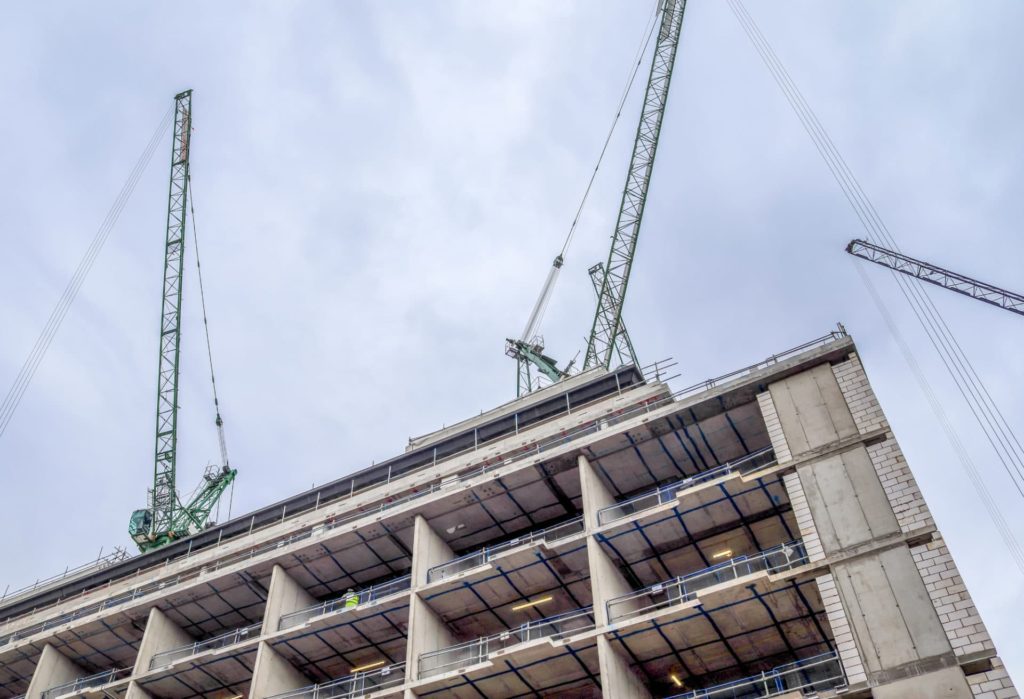
The Building Safety Act is now law, having received Royal Assent on 28 April 2022. However, it will still be some time before we see and experience the full effects of the Act. The delay is partly because a number of the Act's provisions are not set to come into force until such time as supporting secondary legislation has been settled.
Whilst things remain somewhat up in the air until secondary legislation plays catch up – in this article we look at some of the key points coming out of the Act and the things that you can do now, based on what we know so far, to protect your company and your clients.
Key initial provisions come into force on 28 June 2022.
Background
The Act's primary purpose? Building safety (as the title suggests!). The Act was introduced as a direct result of the Grenfell fire disaster in 2017 which killed 72 people and injured a further 70.
The reality? Whilst the overall theme is of course one of building safety, with a strong media focus on the cladding crisis, the Act is far more wide reaching and extensive than just cladding.
The Act applies to almost everyone involved in developing, designing, building and managing property, with great emphasised placed on buildings defined as 'higher risk'. However, the Act is also bringing about a seismic shift and complete overhaul for other construction related matters. Although a dry (albeit very important) subject matter, one would be foolish to assume that the Act deals solely and exclusively with matters of building safety alone.
Key Points
Some of the key focus points introduced by the Act include:
- A more onerous safety regime (specifically in respect of 'higher risk buildings') and new obligations which will apply throughout a building's entire life cycle. Indeed, the Act goes further than the just the construction phase and imposes requirements for periodic building safety and fire risks reviews.
- A new Building Safety Regulator and new training and competency level requirements – architects will now be required, by law, to carry out Continuing Professional Development.
- A framework of enforcement measures to deal with breaches, including criminal sanctions and the extension of both civil and criminal limitation periods.
- The imposition of financial levies on developers.
- Extended limitation periods for all claims, including a retrospective ability to bring claims under the Defective Premises Act for works that took place in the last 30 years.
- Provisions preventing developers from alleviating their risk through SPV's etc. Those ultimately responsible will be able to be pursued, even personally, regardless of any corporate jiggery pokery.
Key Terms, Roles & Extensions to Limitation Periods
Higher Risk Buildings
Whilst the Act confers powers on the Secretary of State to effectively amend the category of buildings which are classified as 'higher risk buildings', they currently include buildings which:
- Are at least 18 metres in height (or have at least seven storeys); and
- Contain at least two residential units.
The Role of the Building Safety Regulator
The Building Safety Regulatory (operating as a division of the HSE) will act as the building control authority for higher risk buildings and under the Act is responsible for overseeing the safety and performance of all buildings, implementing the new regime for higher risk buildings, and encouraging competence in the built environment.
The Building Safety Regulatory is responsible for all regulatory decisions during design, construction, refurbishment, and occupation of higher risk buildings and in order to carry out this role, the Building Safety Regulatory has been afforded strict enforcement powers. For example, the Building Safety Regulator can issue both compliance and stop notices during construction and a failure to comply with such a notice will be a criminal offence with offenders (likely the Directors) facing up to two years in prison and an unlimited fine.
In addition, the Building Safety Regulator can prosecute all offences / breaches of the Act and exercise existing powers under the Building Act 1984 with an extension to the time limit for prosecuting those offences.
Accountable Persons
The Act creates a new role of 'accountable persons'. The accountable person (generally landlords and freeholders in charge of repairing buildings) will be responsible for assessing building safety risks for higher risk buildings during occupation and to take all reasonable steps to prevent the occurrence, and control the impact of, a major incident resulting from building safety risks.
An accountable person demonstrates compliance with its duty by compiling and maintaining a Safety Case Report which must be reviewed and maintained and submitted to the Building Safety Regulator on request. These will be mandatory requirements.
This is an ongoing obligation and accountable persons are required to register buildings and if requested by the Building Safety Regulator apply for and obtain a Building Assessment Certificate, which then must be displayed in a conspicuous position in the building. The accountable person can be an individual, partnership or corporate body and failing to register a building which is occupied is a criminal offence with offenders facing up to two years in prison and an unlimited fine.
It is not yet clear when this part of the Act comes into force.
Extensions to Limitation
Here comes the big news.
Whilst many would be forgiven for thinking extensions to limitation periods would not fall within the remit of legislation designed to improve matters of building safety, the Act surprised many in the industry (including many insurance providers) by making significant extensions to long standing limitation periods.
For instance, for claims under the Defective Premises Act 1972, which covers claims by occupiers for defective work where the property is not fit for habitation, the time limit for bringing a claim (against anyone involved in taking on work for or in connection with the provision of a dwelling) has been extended from:
- 6 years to 15 years for claims which accrue after 28 June 2022.
- 6 years to 30 years for claims which accrued before 28 June 2022.
This means that from the date this section comes into force (28 June 2022) that it will now be possible for many occupiers, which otherwise would have had their claim time/statute barred, to bring a claim where defective works means their property is not fit for habitation.
Corporate Structures
Whereas often risk and overall liability is managed or mitigated by using corporate structures such as SPV's, the Act allows the High Court to make a Building Liability Order if it is "just and equitable" to do so. The aim is to avoid situations where large corporates avoid liability due to corporate structure.
If the Court makes a Building Liability Order then the Court can track back through corporates structures, including companies and SPV's that have been wound up, and transfer liability from one corporate body to another.
Financial Ramifications
For landlords getting to grips with the Act, they now or will soon find themselves having to adhere to a number of new building safety duties (which will understandably have an impact on profit margins) and in certain circumstances will be required to implement costly remedial schemes.
Leaving aside any moral considerations, many have been wondering whether they can pass on these costs, either to tenants or to the various construction professionals involved in the development or the works.
Day to day costs of complying with the Act
In terms of the day to day running costs for ensuring buildings are safe, the Act will permit landlords of relevant leases (a lease which is granted for 7 years or more and where the tenant is required to pay a service charge) to pass on a proportion of the costs of ensuring a building is safe to tenants.
Costs for immediately necessary remedial works to rectify existing building safety defects
The position is different when it comes to current defects which cause a building safety risk. Worryingly for many in the construction industry, the Act has placed great emphasis on holding those ultimately involved in developments responsible, regardless of corporate structures, SPV's or developments at arms' length.
The Act largely (but not in all circumstances[1]) prohibits recoverability from tenants for the cost of any remediation work which may be required to rectify relevant building safety defects. If the lease is not caught by the conditions which prohibit recovery then landlords can pass on these costs to tenants provided landlords exhaust alternative avenues of recovery (and evidence that this has been done), which are explained further in the Act. There is however a limit on the amount payable by tenants.[2]
If a landlord fails to take these steps, then they run the risk of being prohibited from passing on such costs to tenants who have the power under the Act to make an application to the Court for an order that such costs should not be payable under the terms of their lease.
Using the carrot and the stick approach, the Government has written to large developers asking that they enter into a legally binding scheme to commit to remediating those buildings which they have been involved with, as well as asking for a contribution to remediation funds for all other 11-18 metre buildings with defective cladding.
The carrot - for those developers that sign up, the Government has promised its full support on all matters relating to future financing, procurement, planning, building control and housing investment etc.
The stick - for those developers that don’t sign up the Government has issued warnings that they will not receive the same support and for those shirking their responsibilities they will potentially face being shut out from the housing market – by the implementation of regulations which block developers from planning and/or Building Regulations approval (as permitted by the Act), thereby effectively restricting them from operating.
Many it seems have taken the carrot with 35 major homebuilders/developers already agreeing to commit over £2billion to fix unsafe cladding. The fund will be used to fund grants for remediation works where those responsible for buildings cannot be identified or forced to by law.
An avalanche of claims
In reality however, what this means for many in the construction industry is the prospect of an avalanche of potential claims given the extension of conventional limitation periods and retrospective nature of some of the Act's provisions.
Whilst many large developers have taken responsibility for and have committed to remediating those buildings, they played a part in developing, we expect many will try an offset this liability, by passing down claims where possible to others involved in the project. We also expect a growing number of claims from landlords against contractors and other construction professionals.
How this will play out in practice remains to be seen, but it appears from the wording of the Act that the intention is for grants of funding to be secondary to first obtaining monies from third parties connected with the original development or works.
Conclusion
The Building Safety Act is now law and whilst secondary legislation is still required there are a number of steps which can be taken now to protect your position, and these are detailed in the table below.
The points set out above and below are based on the position as known in May 2022. Due to the need for enactment of various secondary enabling legislation, changes as well as shifts in responsibility and the allocation of risk could still change.
What you need to do
| Steps to take now - Developers & Landlords | Steps to take now - Contractors & Other Construction Professionals |
| Carry out a risk assessment by reviewing historic and existing projects to identify projects with potential exposure to claims / liability. | Carry out a risk assessment by reviewing historic and existing projects to identify projects with potential exposure to claims / liability. |
| Review and if necessary, suspend any automatic and routine document destruction policies which may destroy potentially key documentation after just 12 years given the extension to limitation periods. | Review and if necessary, suspend any automatic and routine document destruction policies which may destroy potentially key documentation after just 12 years given the extension to limitation periods. |
| Carefully consider the suitability of cladding on future projects. | Carefully consider the suitability of cladding on future projects. |
| Consider additional insurance | Consider additional insurance |
| Sign up to the Government scheme committing to remediate buildings which have safety defects or risk being blocked from the housing market. | If on the receiving end of a claim under the DPA 1972 which would otherwise be timed barred, check with an appropriate professional whether the existence of the alleged defect renders the property unfit for habitation. Minor defects and those which do not render the property unfit for habitation are not covered by the extension to limitation. |
| Consider the negative publicity of not signing up to the Government scheme. A list of those developers who have already signed up has been published by the Government. | Check whether liability can be passed on – either upstream or downstream. |
| Check whether any buildings you own or manage fall within the definition of 'higher risk buildings'. If an accountable person, register those buildings at the appropriate time and obtain the necessary Building Assessment Certificates. | Ensure all contracts/appointments etc. are properly executed and all collateral warranties have been entered into. |
| Check and take advice on whether the day to day running costs of ensuring building safety can be passed on to tenants by way of Building Safety Charges. | For new contracts check that the contractual terms adequately record the agreed allocation of risk and where appropriate adequately flow down liability so that the extent of liability mirrors each party's obligations under the Act. |
| Check with an appropriate professional whether defects are cosmetic or a genuine building safety defect. Ascertain whether the existence of a safety defect renders the property unfit for habitation. | Check insurance provisions, particularly whether cover will be provided for claims which would ordinarily have become time barred. |
| If immediate remedial works are necessary to rectify existing building safety defects, explore (and appropriately record the steps taken as evidence) whether the costs of carrying out these works can be recovered from a third party and whether funding/grants are available to meet these costs before passing these on to tenants. | |
| Promptly arrange for the rectification of building safety defects – or risk being on the receiving end of a remediation order. | |
| For all new projects, ensure that liabilities (which are now likely unavoidable) can be passed on to financially sound contractors with the use of supply chain approval, watertight collateral warrantees, guarantees, PCG's and Bonds. |
Get in touch
[1] Circumstances where recoverability from tenants is prohibited – (i) the costs of cladding remediation; (ii) where the landlord is responsible for the relevant defect or is associated with the person responsible for the relevant defect; (iii) where the landlord's group net worth at the qualifying time meets the contribution condition (No. of lease buildings owned x £2,000,000); and (iv) where the lease is below a certain value (£175,000 & £325,000 for Greater London)
[2] £10,000 and £15,000 for Greater London, save that if the value of the lease exceeded £1m but not more than £2m the limit is £50,000 and for leases which exceed £2m the limit is £100,000. Additional rules also apply to shared ownership, and there is also an annual limit on service charges – 1/10th of the permitted maximum















